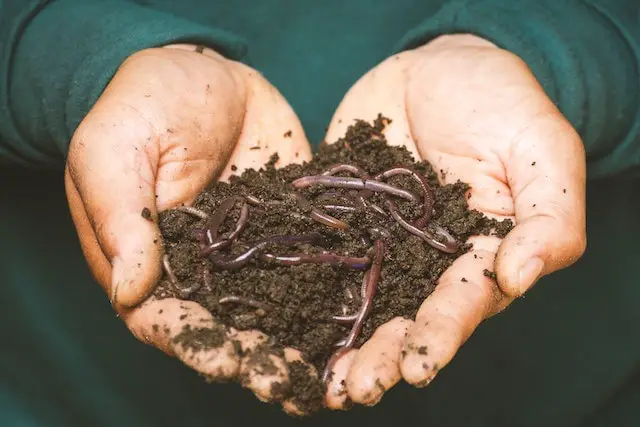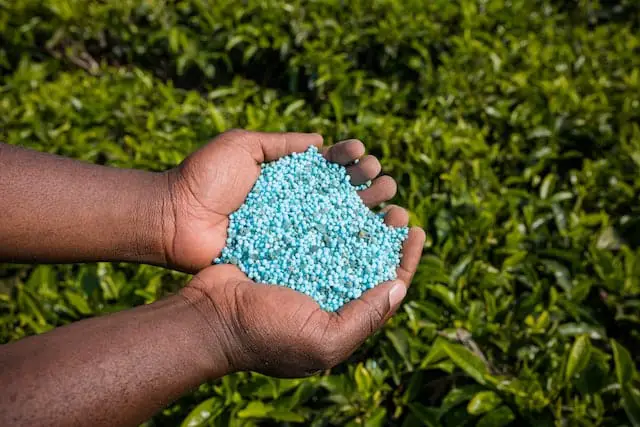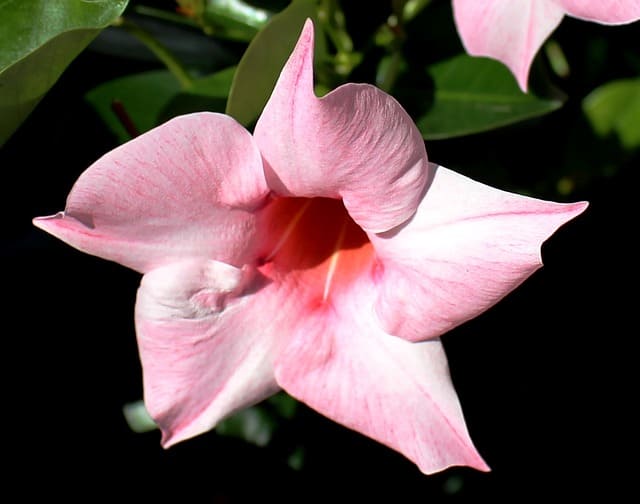Mandevilla is a popular tropical vine that is known for its beautiful pink flowers with yellow centers. However, if you notice the leaves on your mandevilla turning yellow, it may be an early sign that your plant needs extra care and attention.
Yellowing leaves on a mandevilla plant can be caused by a variety of factors, including improper watering, nutrient deficiency, and pest infestations.
To understand why mandevilla leaves turn yellow, it’s important to know that yellowing leaves are a sign of chlorosis, which is a lack of pigment (chlorophyll) in the leaves.
Chlorophyll is essential for photosynthesis, which is the process that allows plants to produce energy from sunlight. When leaves turn yellow, it means that the plant is not able to produce enough energy to sustain itself. This can lead to stunted growth, wilting, and eventually, the death of the plant.
If you’re experiencing yellowing leaves on your mandevilla plant, don’t worry. There are several steps you can take to prevent and treat this problem. By understanding the causes of mandevilla yellowing and providing proper care, you can help your plant thrive and enjoy its beautiful blooms for years to come.
Key Takeaways
- Yellowing leaves on a mandevilla plant are a sign of chlorosis, which is a lack of pigment (chlorophyll) in the leaves.
- Causes of mandevilla yellowing include improper watering, nutrient deficiency, and pest infestations.
- To prevent and treat mandevilla yellowing, it’s important to provide proper care and address any underlying issues.
More on this category:
Understanding Mandevilla Yellowing

Mandevilla plants are known for their beautiful and vibrant flowers, but sometimes their leaves can turn yellow. This is a common problem that can be caused by a variety of factors, including nutrient deficiencies, watering issues, and pests.
Yellowing leaves are a symptom of a problem with the plant, but it is important to diagnose the specific issue in order to properly treat it. When diagnosing the problem, it is important to look at the entire plant and not just the yellowing leaves.
One possible cause of yellowing leaves is a nutrient deficiency. Mandevilla plants require a balanced supply of nutrients to thrive, and an imbalance can cause yellowing leaves.
Iron deficiencies are particularly common with mandevilla plants, and can cause younger leaves near the base of the vine to yellow first. In this case, the soil pH for mandevilla should be under 7.0 to ensure the plant can absorb iron from the soil.
Another possible cause of yellowing leaves is watering issues. Overwatering can cause waterlogged roots, while under-watering can cause the leaves to curl and yellow.
It is important to water mandevilla plants consistently and avoid letting the soil dry out completely. Bottom watering can be effective in this case, as the plant will only take up the water it needs.
Pests can also cause yellowing leaves on mandevilla plants. Spider mites, aphids, and whiteflies are common pests that can cause damage to the leaves and cause them to yellow. It is important to regularly inspect the plant for pests and treat them promptly if they are found.
Mandevilla Turning Yellow – 5 Common Problems
Mandevilla plants are known for their beautiful, showy flowers. However, if the leaves of your mandevilla plant are turning yellow, it may be a sign that something is wrong. Here are some of the most common causes of mandevilla yellowing:
1. Watering Issues
Overwatering or underwatering can cause the leaves of a mandevilla plant to turn yellow. Waterlogged roots can lead to root rot, while dry soil can cause the leaves to curl and yellow.
It is important to water mandevilla plants regularly, but not too much or too little. Bottom watering can be effective in this case, as the plant will only take up the water it needs.
2. Nutrient Deficiency

A lack of nutrients, such as nitrogen, iron, or manganese, can cause the leaves of a mandevilla plant to turn yellow. Iron deficiencies are more common with mandevilla plants than other nutrients.
If this is the case, the younger leaves near the base of a mandevilla vine will yellow first. The soil pH for mandevilla ought to be under 7. Any higher than a 7.0 and the plant will struggle to absorb iron from the soil.
3. Pest Infestation
Spider mites, aphids, mealybugs, and whiteflies are common pests that can infest mandevilla plants. These pests can cause yellowing, brown spots, and falling off of leaves. Horticultural oil and insecticidal soap can be effective in controlling these pests.
4. Soil and Drainage Issues
Poor drainage, hard-packed soil, and crowded roots can also cause the leaves of a mandevilla plant to turn yellow. Mandevilla plants prefer well-draining soil and containers with drainage holes. Repotting in fresh, well-draining soil can help fix this issue.
5. Temperature and Sunlight
Mandevilla plants prefer full sun, but can suffer in extreme temperatures. Frost and cold temperatures can damage the leaves and cause them to turn yellow. On the other hand, too much direct sunlight can scorch the leaves and cause them to die.
Mandevilla plants also prefer warm temperatures, and may suffer if kept in a cold or drafty location.
Prevention and Treatment

Preventing mandevilla leaves from turning yellow requires proper care and maintenance. Here are some tips to prevent yellowing leaves:
- Soil: Use well-draining soil that is rich in organic matter. Mix in sand, peat moss, or compost to improve drainage and aeration.
- Water: Water mandevilla vines deeply and regularly, but avoid overwatering. Make sure the soil is moist but not soggy. Water less frequently during the winter months.
- Fertilizer: Feed mandevilla vines with a balanced liquid fertilizer every two weeks during the growing season. Avoid over-fertilizing, which can cause nutrient burn and yellowing leaves.
- Roots: Check the root system regularly for signs of root rot or overwatering. Repot the plant in a larger pot if the roots are crowded or if the soil is compacted.
- Drainage: Make sure the pot has drainage holes to prevent water from accumulating at the bottom of the pot.
- pH: Check the soil pH regularly and adjust it if necessary. Mandevilla vines prefer a slightly acidic soil with a pH between 5.5 and 6.5.
- Neem oil: Use neem oil or horticultural oil to control pests that can cause yellowing leaves. Apply the oil according to the manufacturer’s instructions.
If mandevilla leaves are already turning yellow, here are some treatment options:
- Nutrients: Yellow leaves may be a sign of nutrient deficiency. Use a fertilizer that is high in nitrogen, iron, manganese, or zinc to correct the deficiency.
- Watering: Adjust the watering schedule to prevent overwatering or underwatering. Make sure the soil is moist but not soggy.
- Roots: Check the roots for signs of root rot or overwatering. Repot the plant in a larger pot with fresh soil if necessary.
- pH: Adjust the soil pH if it is too high or too low. Use a soil testing kit to determine the pH level of the soil.
- Light: Make sure the plant is getting enough light. Mandevilla vines prefer full sun or partial shade.
- Pot size: Check the pot size and make sure it is appropriate for the plant. Mandevilla vines need a large pot to accommodate their root system.
- Moisture: Increase the humidity around the plant by misting it regularly or placing a tray of water near the plant.
- Liquid fertilizer: Use a liquid fertilizer that is high in nitrogen to promote new growth and green leaves. Apply the fertilizer according to the manufacturer’s instructions.
By following these prevention and treatment tips, mandevilla vines can thrive and produce their stunning pink flowers with yellow centers.
Caring for Mandevilla

Mandevilla is a beautiful and showy vine that produces vibrant pink or white blooms in the summer. To keep your mandevilla healthy and thriving, it’s essential to provide the right care.
1. Soil and Potting
Mandevilla plants prefer well-draining soil that is rich in organic matter. A good potting mix for mandevilla should contain a blend of peat moss, sand, and compost.
It’s also important to choose a pot that has drainage holes to prevent the soil from becoming too soggy. When repotting, make sure to choose a pot that is only slightly larger than the current one to avoid overwatering.
2. Water and Fertilizer
Mandevilla plants need regular watering, especially during the summer months. Water the plant once a week and make sure the soil is moist but not waterlogged.
Overwatering can lead to root rot and other issues. Mandevilla plants require regular fertilization with a liquid fertilizer that is high in nitrogen and iron. Fertilize the plant every two weeks during the growing season.
3. Sunlight and Temperature
Mandevilla plants prefer full sun and warm temperatures. They can tolerate temperatures as low as 50°F but prefer temperatures between 70-80°F. In colder climates, mandevilla plants can be grown indoors near a sunny window.
4. Pest and Disease Control
Mandevilla plants are susceptible to whiteflies and other pests. To prevent infestations, keep the plant well-watered and fertilized. If an infestation does occur, treat the plant with an insecticidal soap or neem oil.
Mandevilla plants can also develop brown spots on the leaves, which may be a sign of overwatering or poor drainage. Ensure the plant has good aeration and drainage to prevent this issue.
Frequently Asked Questions

What does an overwatered mandevilla look like?
An overwatered mandevilla may have yellow leaves that fall off easily. The soil may feel constantly wet and may have a foul odor. The plant may also have stunted growth and may develop root rot.
Why are my mandevilla leaves turning yellow?
Mandevilla leaves can turn yellow due to various reasons such as improper watering, nutrient deficiencies, pests, and diseases. The most common reason is improper watering, which can cause the roots to become soggy and experience root rot.
How do you fix yellow leaves on mandevilla?
To fix yellow leaves on mandevilla, identify the underlying cause first. If the cause is improper watering, adjust the watering schedule and ensure that the soil has good drainage.
If the cause is nutrient deficiency, fertilize the plant with a balanced fertilizer. If the cause is pests or diseases, treat the plant with appropriate insecticides or fungicides.
How often should mandevilla be watered?
Mandevilla should be watered when the top inch of soil feels dry. The frequency of watering may vary depending on the climate and the size of the container. In general, mandevilla needs more water during hot and dry weather and less water during cool and humid weather.
How do you save an overwatered mandevilla?
To save an overwatered mandevilla, stop watering the plant until the soil has dried out. Remove the plant from the container and inspect the roots for signs of rot.
If the roots are mushy and brown, trim them off with sterile scissors. Repot the plant in fresh soil with good drainage and resume watering when the soil feels dry.
What are some tips for caring for mandevilla in pots?
Some tips for caring for mandevilla in pots include using a well-draining soil mix, providing ample sunlight, fertilizing regularly, and pruning the plant to maintain its shape. Mandevilla can also benefit from support such as a trellis or a stake.

Hey, I’m Lisa and I’ve been an avid gardener for over 30 years. I love writing, talking and living in the garden! Feel free to connect with me on my socials below

